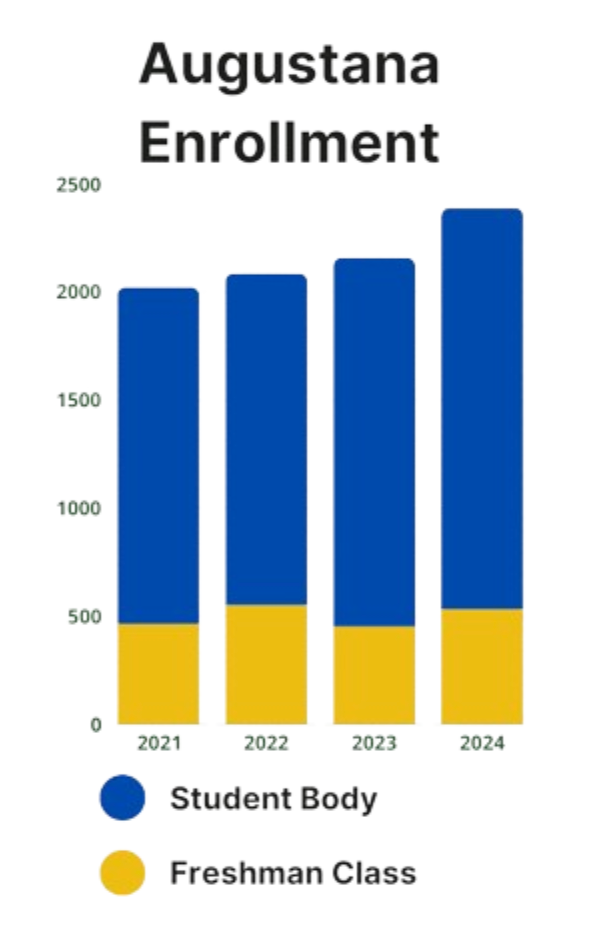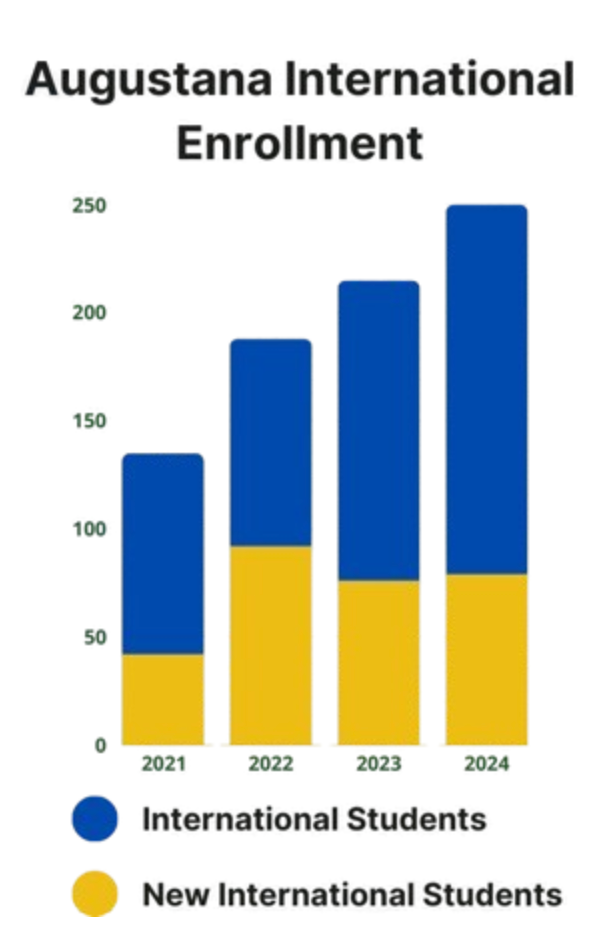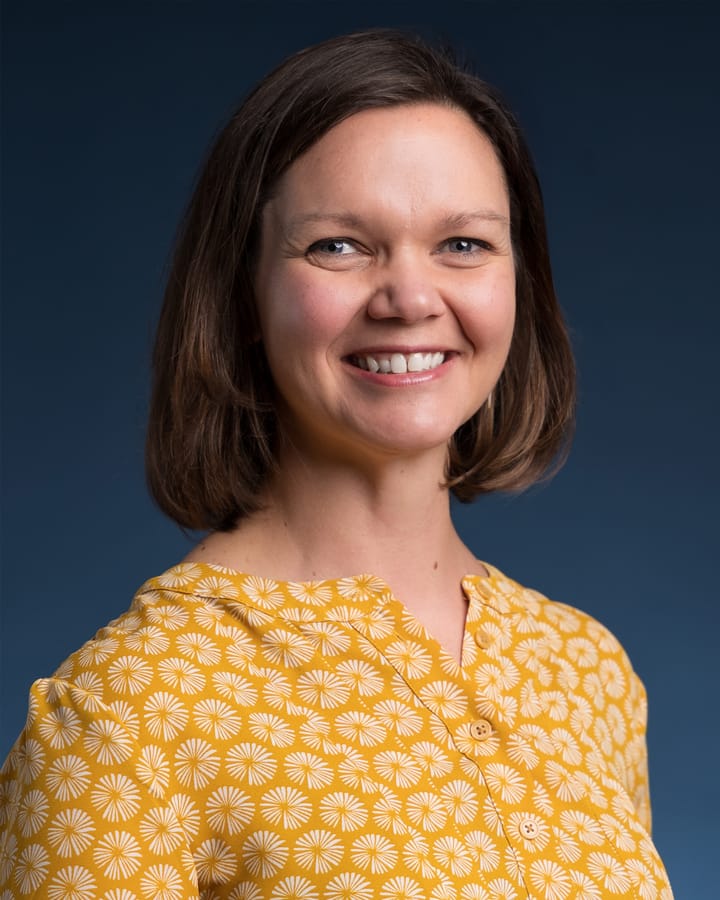Augustana smashes enrollment records despite FAFSA delays

This year, Augustana welcomes 2,390 students, with 533 incoming full-time freshmen, the second largest incoming class and largest student body in Augustana history.
This is up from last year’s freshman class of 454 and marks the fourth consecutive year in which the University's overall enrollment has increased.

Augustana’s growth goes beyond freshmen with 154 more new undergraduate students transferring from other schools, enrolling as part-time students, and traveling as exchange students.
The University also set a new record of 387 graduate students, many of whom enrolled in Augustana’s Doctor of Physical Therapy program which started last year.
More students choosing to stay at Augustana is also a significant factor in student body growth. This year, 85.5% of first-year students from last Fall returned this academic year, the third highest retention rate in university history.
"The continued work on our campus by amazing people like the Student Success team (Mary, Ann, Travis, Sanna, Tim and Wendy) and the work of our DEI team - especially with Journey Scholars (Willette and Tyra) along with massive efforts all across campus have had an impact on our retention rates," Registrar & Assistant Vice Provost of Academic Affairs Joni Krueger said. "Our faculty are working tirelessly, often way above and beyond the normal work hours, to make sure they are connecting with students and helping them grasp the information they need to be successful."
Enrollment climbed in spite of national issues with this year’s Free Application for Federal Student Aid, known as FAFSA.
Last year, the U.S. Department of Education created a simplified FAFSA that suffered from numerous malfunctions when it was released in December, two months later than usual.
Despite the U.S. Department of Education’s efforts to fix FAFSA-related issues, 10% fewer Augustana students filed a FAFSA than last year, on par with national drops in FAFSA completion.
Augustana’s Office of Financial Aid was proactive in addressing FAFSA delays, using a financial aid estimator to help students get an idea of what aid they would receive from the FAFSA before results were announced. The estimator was previously used with students recruited early for athletics.
“The things that we did were not rocket science,” Tresse Evenson, assistant vice president of financial aid, said. “The one thing I think we did do was something. Doing something won out on waiting.”
Such measures allowed Augustana to grow and support a lower-income population with a five-year high of 26.2% of students receiving Pell Grants, federal subsidies for students with exceptional financial needs.
Augustana’s new LAUNCH program, which offers full tuition for first-year students from Minnehaha and Lincoln counties that qualify for a Pell Grant and maintain a 3.25 GPA through their junior year of high school, likely contributed to increased Pell Grant recipients, Evenson explained. This program will eventually expand to students across South Dakota.
Augustana’s international population has also grown with 79 new international students, 59 of whom are freshmen, for a record of 250 enrolled international students.

“It was a great year,” Donn Grinager, director of international admission, said. “I was going to say we couldn’t be more pleased, but we actually could’ve been more pleased."
Grinager and Liz Fossum, international admission counselor, were excited with the number of international freshmen Augustana recruited but not as excited as they had been when they had 161 deposits in July.
A wave of visa refusals prevented many international students from attending Augustana this fall. Visa denials have risen in recent years; a record 36% of students applying for an F-1 visa to study in the U.S. were refused in 2023.
“There are more student visas being issued than ever before,” Fossum said, “but the number of visa applications is so much higher than before.”
The amount of visas being given to students hoping to study in the United States has not met increased demand.
Almost 50 students have deferred admission due to visa issues and may yet attend Augustana in spring.
In addition to the international student population, Augustana has furthered domestic diversity with a record 57 students joining the Journey Scholars Program, which supports and empowers students of color, up from 47 last year.
“Students today are attracted to larger universities that have a lot to offer,” Adam Heinitz, associate vice president of enrollment management, said. “Part of our mission too is to serve our community, and we need to be equipped to serve the growing community of Sioux Falls, and that means serving more students and different types of students with different backgrounds and interests.”
Heinitz said Augustana was on track to reach an enrollment goal of 3,000 by 2030, part of Augustana’s Viking Bold strategic plan. 600 of these students are expected to be enrolled in Augustana’s graduate programs.
“The competition is more fierce than it has ever been,” Heinitz said. “Sioux Falls is a target for a lot of colleges, so we want to be strong here in our immediate area but also want to grow our footprint and expand our market.”



